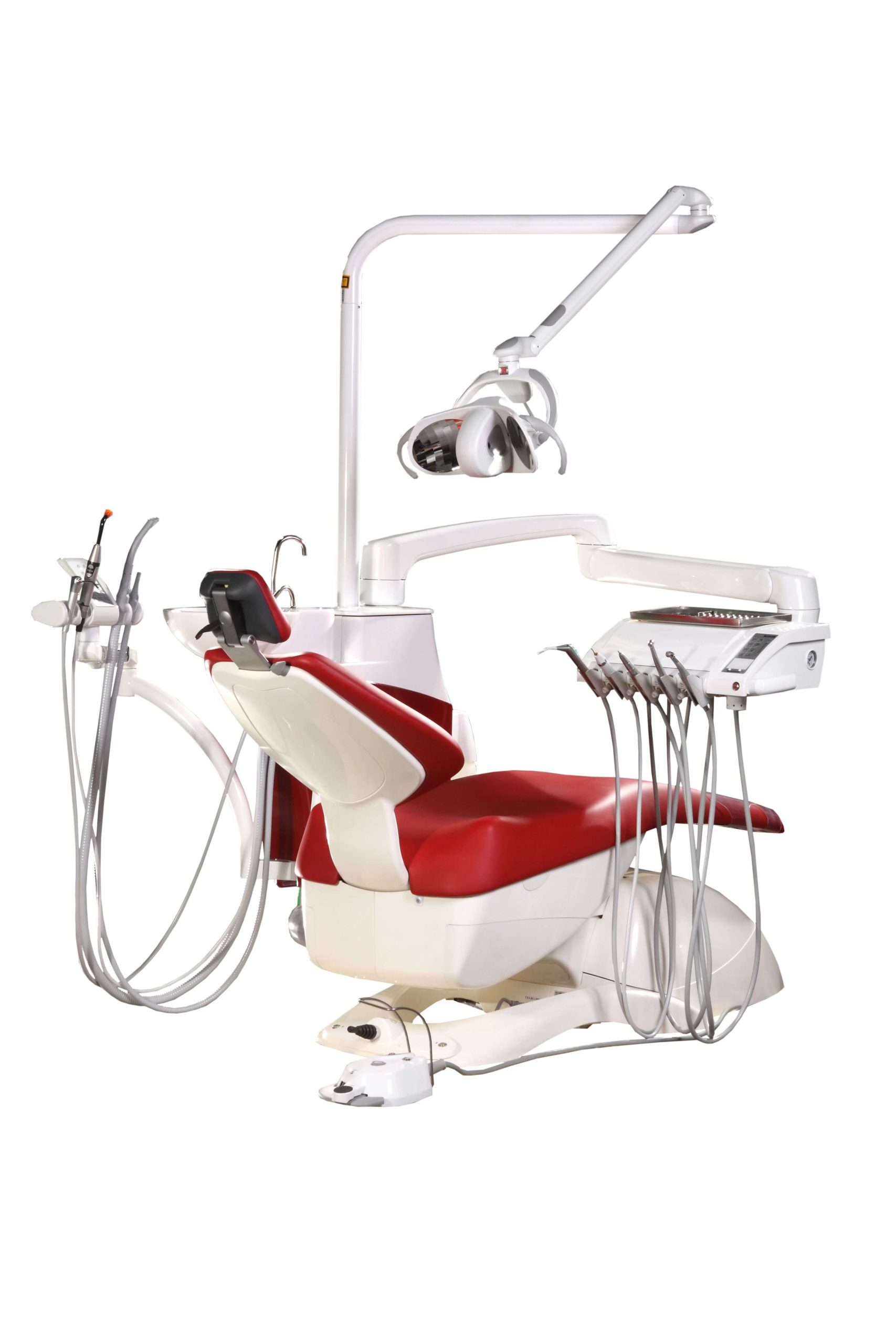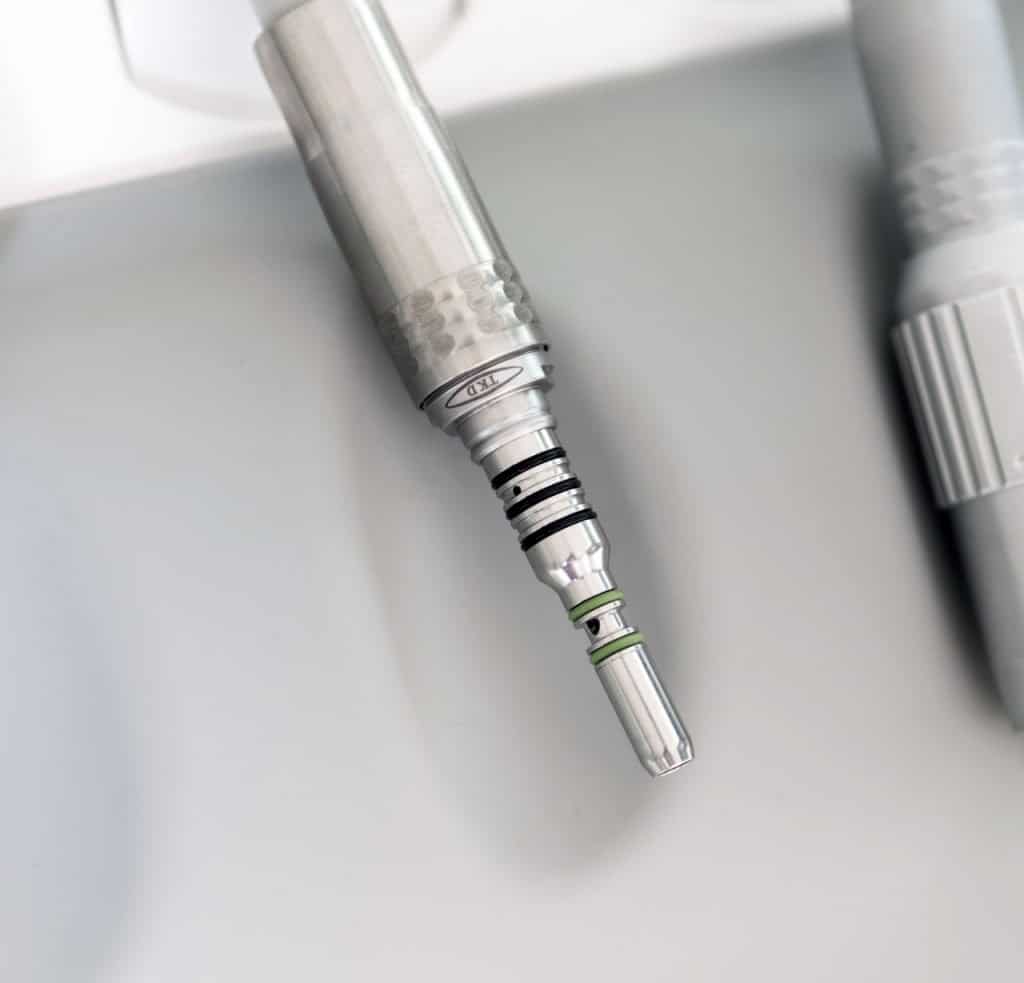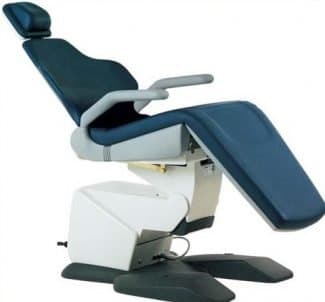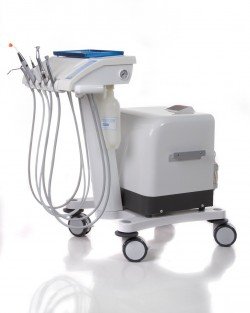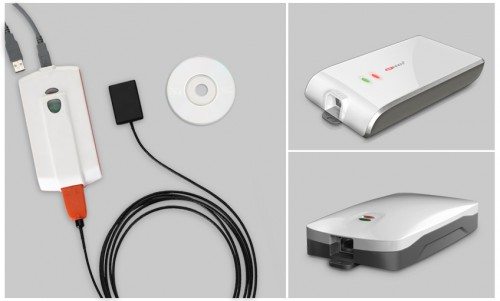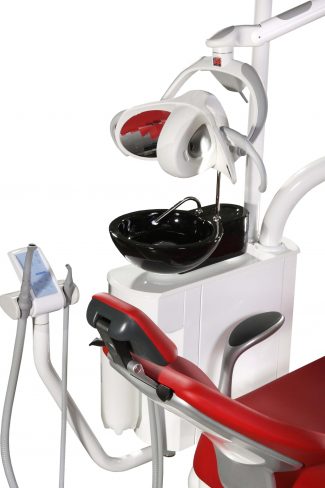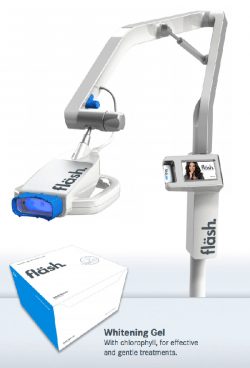
Electric Handpieces: An Overview of Current Technology
Ayaz Ahmad2019-05-25T15:53:25+01:00Electric Handpieces: An Overview of Current Technology
Gregori M. Kurtzman
Electric handpieces are rapidly replacing traditional air-driven, high-speed handpieces in the US market. Industry estimates indicate that only 20% of practices employ an electric handpiece for restorative treatment, whereas in the European market over 80% of restorative practices are employing electric handpieces to prepare teeth for restorations. Practitioners who have tried electric handpieces become quick converts to the benefits of preparing a tooth for a crown with an electric handpiece.
Speed and Torque
Two factors to understand when comparing air-driven vs electric handpieces are speed and torque. Speed is expressed in revolutions per minute (rpm), whereas torque is expressed in watts and is an indication of the tool’s cutting power. Air-driven high-speed handpieces typically will have speeds between 250,000 and 420,000 rpm but the torque is relatively low, whereas an electric handpiece may have speeds around 200,000 rpm but relatively high torque. This implies that air-driven handpieces are faster than electric handpieces. However, when a bur in an air-driven handpiece contacts material to be cut, the speed will drop by as much as 40% or more (depending on the hardness of the material) because as resistance builds during cutting, the air pressure is insufficient to maintain the speed of rotation of the turbine. The harder the material being cut, the more resistance is created and the slower the bur spins. Our instinctive reaction is to place more pressure upon the bur to get it to cut the material, which increases resistance even further, creating a vicious circle.
An electric handpiece offers smooth, constant torque that does not vary as the bur meets resistance. With electric handpieces, the bur is connected through gears in the head of the handpiece to a central drive shaft that is physically turned by the motor. Because of the absence of air, these handpieces are quieter and the chance of air embolism in a surgical site is eliminated. Thus, the power output with electric handpieces is greater than with air-driven handpieces, offering 33 to 45 watts of cutting power. Because the speed and torque are constant, removing difficult crowns, bridges, and restorations become easier. Electric motors also offer accuracy by enabling the end user to set precise speeds for procedures, rather than the conventional “feathering” of the rheostat. Another difference between air and electric handpieces to consider is that in electric handpieces, power output is not dependent on head size. Some manufacturers offer smaller-head handpieces that may be beneficial in pedodontics applications or when operating in the posterior in confined spaces (Figure 1).
Cutting efficiency is actually a balance between the speed and torque delivered to the bur. A good way to demonstrate this is the “penny test.” Take a penny and grasp one end with a pair of locking hemostats to stabilize the penny. Next, using a carbide bur in the handpiece, cut a slot in the penny. Typically, the air-driven handpiece will bog down as it attempts to cut the slot and may stall as increasing pressure is placed on the bur. The electric handpiece will demonstrate smooth, even cutting without bogging down. This test is a good demonstration of how the handpiece may act clinically when preparing a tooth with an amalgam core or cutting a slot in a non-precious crown to aid in its removal.
Understanding Gear Ratios
Electric handpieces will have a gear ratio imprinted on the handpiece which helps identify what procedures are best performed with that particular gear ratio. The ratio is expressed as X:Y, with a high-speed handpiece having a 1:5 ratio, and those intended for slow-speed procedures having a ratio expressed as 1:1. Some companies also offer handpieces for “ultra” slow-speed procedures such as pin placement or endodontics with a gear ratio of 10:1 or 16:1.
Typical procedures done with a high-speed (1:5) handpiece would be cavity preparation, crown preparation, and sectioning existing fixed prosthetics. These high-speed handpieces accept standard friction-grip burs or diamonds and push-button bur chucks. Slow-speed (1:1) handpieces would be indicated for caries removal, preparation refinement, and adjustment of ceramics. Depending on the manufacturer, slow-speed heads are available in either a friction-grip or latch-grip. The benefit of a friction-grip slow-speed head is any bur that can be used in a high-speed can be alternatively used in a slow-speed. Additionally, friction-grip burs typically retail for less than half the cost of latch-grip burs and diamonds are only offered in friction-grip applications.
Couplings and Connectors
Currently, all electric handpieces offer the standardized ISO coupling between motor and attachment (also called electric or universal coupling). The abbreviation for this universal electric connector is termed an “E” connector. The benefit of this is that most electric handpieces will fit any manufacturer’s motor. The exception is the Star Dental (Lancaster, PA) connector, which has a variation on the aligning tab used to line up the fiber optics that differs from the standard alignment tab. This variation presents as a round tab on the motor end and a corresponding round dimple on the handpiece. The standardized E connector that is used by other manufacturers presents with a rectangular depression on the motor with a corresponding tab on the handpiece. But before switching to a different brand of handpiece than the motor’s manufacturer, make sure that if the handpiece is lighted that the optics connection in the coupling will work with your current motor cable (Figure 2).
Sirona also offers a propriety connector in addition to its standard E connector. This connector places the motor deeper within the handpiece. Practitioners with smaller hands may find the balance more efficient (Figure 3).
Warranties
Warranties can be confusing in terms of understanding what exactly is covered and for what period of time. Most handpiece companies will warrant the handpiece for at least 1 year. Warranties may be extended and the manufacturer should be contacted for further information on the details. Extended warranties often require use of that company’s lubricant and some require use of their particular lubricating unit.
One aspect to understand is the warranty on the handpieces optics. Current glass-rod technology (fused bundle) is very durable. Most manufacturers provide a 5-year warranty on the optics. Glass rods basically do not deteriorate under repeated sterilization cycles. However, if you drop the handpiece and the rod breaks, typically manufacturers will consider this a void in the warranty and the owner of the handpiece will need to cover any repair costs. Therefore, extended warranties on the glass rods is more or less a marketing tool.
How to Incorporate an Electric System Into Your Practice
Incorporation of an electric-handpiece system into the practice takes minimal setup. A standard handpiece connector is attached to the back of the electric system’s control unit box and the unit is mounted under the bracket table. This connection to the air line that was used with the air-driven handpiece allows use of the current rheostat to run the electric handpiece. Additionally, air is required through the water line, termed “chip air,” to create a mist at the terminal end of the handpiece as cutting is performed. Without chip air, the water exits as a stream and does not efficiently cool the bur. Should your chairside unit not provide chip air, your dental supplier’s equipment staff can quickly remedy the situation.
Adaptation to electric handpieces does have a learning curve. Unlike cutting a preparation with an air-driven handpiece, the electric has constant torque; therefore a lighter touch is required so that over-preparation does not occur when cutting tooth structure.
Available Models
Following is a brief description of the available electric handpiece models currently on the market. The manufacturer contact information is provided in Table 1.
Adec/W&H
Adec (Newberg, Oregon)/W&H (Bürmoos, Austria) offers the EA-51LT electric brushless micromotor and control unit (Figure 4). With over 60 W of high-torque power, the EA-51LT offers speeds from 3 to 200,000 rpm. The EA-51T also has a wide array of attachments available for use with burs, reamers, and NiTi files, including a fully-dedicated WD-79M endo attachment that offers 90% torque efficiency. Operators can switch between high, low, or endo simply by lifting the appropriate handpiece from its holder. There are foot control or touchpad options, as well as auto-sensing capabilities with auto-forward, auto-stop, and auto-reverse functions.
BienAir
The Optima MX by Bien Air (Bienne, Switzerland) electric brushless micromotor and control unit offers a speed range of 100 rpm to 40,000 rpm at the motor (Figure 5). When used in combination with its CA 1:5 L friction grip handpiece, speeds can be run from 500 rpm to 200,000 rpm. The CA 1:1 L (latch-grip) is used for slow-speed cutting, post-pin drilling, and endodontic applications as well as finishing and polishing with speeds ranging from 100 rpm to 40,000 rpm. With the Bien Air system reduction angles for slow speed and endonotic procedures are not necessary. A straight handpiece that accepts HP burs, the HP 1:2, is also available for surgical or lab applications, providing a speed range of 1,000 rpm to 80,000 rpm.
Brasseler/NSK
The Ti-Max NL400 electric brushless micromotor and control unit (Brasseler/NSK, Savannah, Georgia) offers a speed range of 100 rpm to 40,000 rpm at the motor. When used in combination with their Ti-Max Ti-95L handpiece (1:5), speeds can be increased to 200,000 rpm (Figure 6). A mini-head high-speed handpiece (Ti-Max Ti-85L) with a 1:5 ratio is available. For slow-speed applications, there is a choice between the Ti-Max Ti-20L (friction-grip) with a ratio of 1:1 (40,000 rpm), the Ti-Max Ti-15L (latch-grip) with a ratio of 4:1 (10,000 rpm) and the Ti-Max Ti-10L (latch-grip) with a ratio of 16:1 (2,500). A straight handpiece that accepts HP burs, the Ti-Max Ti-65 with a 1:1 ratio, is also available for surgical or laboratory applications.
DENTSPLY Midwest
The Midwest eStylus™ (Dentsply Professional Midwest, York, PA) electric micromotor and control unit offers a speed range of 1,500 rpm to 40,000 rpm at the motor (Figure 7). When used in combination with the eStylus 1:5 handpiece, speeds can be increased to 200,000 rpm or decreased to as slow as 7,500 rpm. When slow-speed preparation is needed, the eStylus 1:1 contra angle (latch-grip) has a speed range of 1,500 rpm to 40,000 rpm. The eStylus Endodontic (latch-grip) with a 10:1 ratio for ultra slow-speed cutting, post-pin drilling, and endodontic applications offers speeds of 150 rpm to 4,000 rpm. A straight handpiece that accepts HP burs, the eStylus straight with a 1:1 ratio, is also available for surgical or laboratory applications.
KaVo
The ELECTROtorque (KaVo, Lake Zurich, IL) plus electric micromotor and control unit (Figure 8) offers a speed range of 2,000 rpm to 40,000 rpm at the motor. When used in combination with their 25LPA handpiece (1:5), speeds can be increased to 200,000 rpm; when slow-speed preparation is needed, the 20LP contra angle with 68LU friction grip head with a ratio of 1:1 and a maximum speed of 40,000 rpm would be indicated (Figure 9). The 62LDN (latch-grip) 10:1 ratio head with the 20LP allows for non-torque control rotary endodontic operation, ultra slow-speed cutting, post-pin drilling at a speed as low as 200 rpm. A straight handpiece that accepts HP burs, the 10CHC with a 1:1 ratio, is also available for surgical or laboratory applications. For an electric system that features auto-reverse and torque-control endodontic capabilities in addition to high and low speed, KaVo offers the ELECTROtorque TLC. With a speed range of 34 to 200,000 rpm (two attachments), the ELECTROtorque TLC incorporates all other features of the ELECTROtorque plus.
Sirona
The SIROTorque L+ (Sirona, Bensheim, Germany) electric brushless micromotor and control unit offers a speed range of 90 rpm to 40,000 rpm at the motor (Figure 10). When used in combination with the T1 Classic S 200 L handpiece (1:5), speeds can be increased to 200,000 rpm (Figure 11). When slow-speed preparation is needed, the T1 Classic S 40 L handpiece (latch-grip) with a ratio of 1:1 and a maximum speed of 40,000 rpm would be indicated. The T1 Classic S 1.6 L handpiece (latch-grip) with a 24:1 ratio for ultra slow-speed cutting, post-pin drilling, and endodontic applications offers a speed of 1,600 rpm. For endodontic applications, the T1 Classic Endo L handpiece with a 9.5:1 ratio and 30°-rotation (oscillating) with a speed of 4,000 rpm is available. A straight handpiece that accepts HP burs, the T1 Classic S H 40 handpiece with a 1:1 ratio, is also available for surgical or laboratory applications. Also available are two implant handpieces (20:1 and 80:1 gear ratios) that will attach to the brushless motor and accommodate irrigating systems.
Star Dental
The Titan E-lectric (Star Dental, Lancaster, PA) micromotor and control unit offers a speed range of 1,000 rpm to 40,000 rpm at the motor (Figure 12). When used in combination with the 1:5 handpiece, speeds can be increased to 200,000 rpm or decreased to as slow as 10,000 rpm (Figure 13). A miniature head is also available in the 1:5 ratio. When slow-speed preparation is needed, the 1:1 contra angle (available as a friction- or latch-grip) has a speed range of 1,000 rpm to 40,000 rpm. The Endodontic (latch-grip) with a 16:1 ratio for ultra slow-speed cutting, post-pin drilling, and endodontic applications offers speeds of 100 rpm to 2,500 rpm. A straight handpiece that accepts HP burs, the straight with a 1:1 ratio, is also available for surgical or laboratory applications with speeds of 1,000 rpm to 40,000 rpm.
Acknowledgments
The information presented in this overview about electric handpieces was provided by the manufacturers through their respective product literature and user manuals. The author would like to thank the following for their assistance with this article: Cassie Campbell (Star Dental), Katie Flynn (Dentsply Professional), Jim Lee (BeinAir), Jamie McCurry (Brasseler/NSK), Kristi Peterson (Adec/W&H), Jennifer Pottala (KaVo), and Margaret Rose Evans (Sirona).
About the Author
Gregori M. Kurtzman, DDS, MAGD, DICOI
Private Practice
Silver Spring, Maryland


